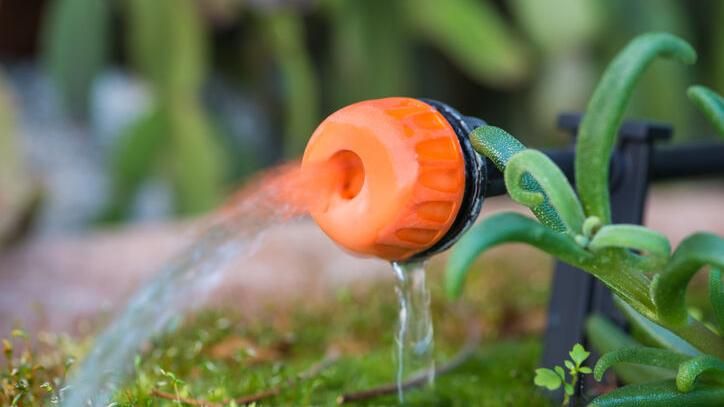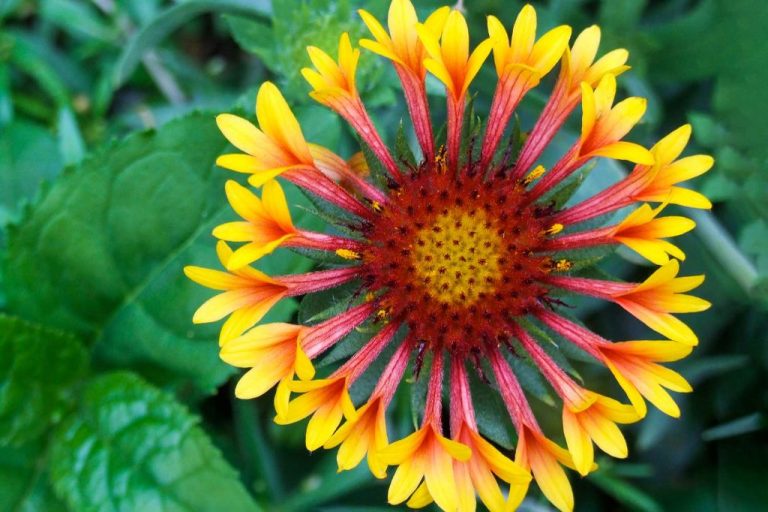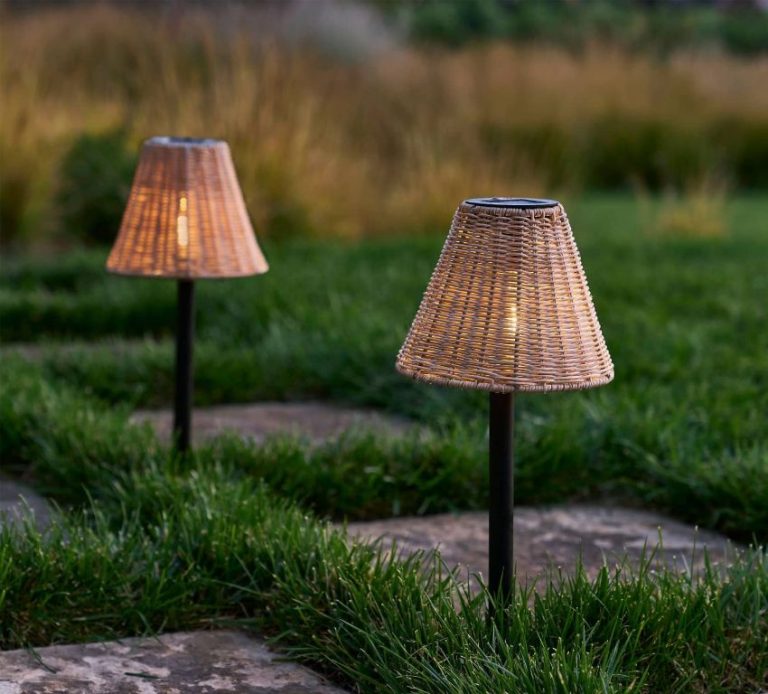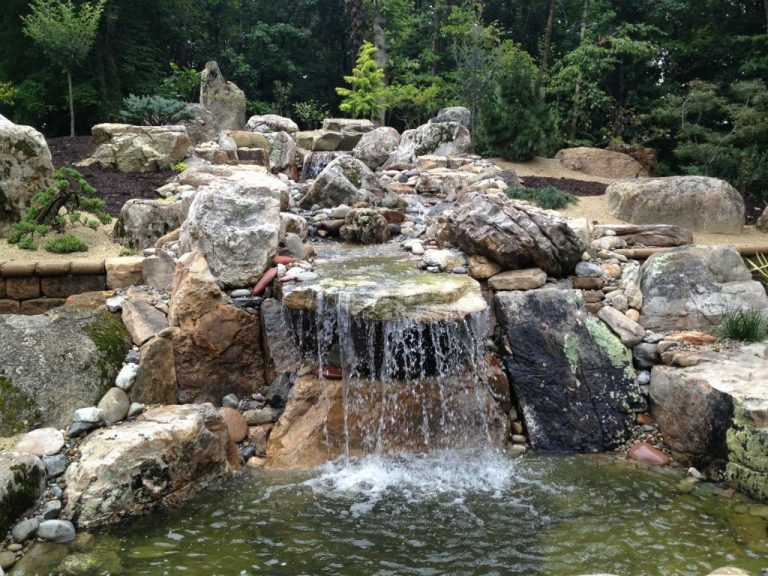Xeriscaping: Sustainable Landscaping Ideas For Water Conservation
Xeriscaping is a form of sustainable landscaping that utilizes water-efficient principles and drought-tolerant plants to reduce outdoor water usage. The term “xeriscaping” comes from the Greek word “xeros” meaning dry. It refers to landscaping techniques that require little to no irrigation beyond what nature provides through rainfall.
The main goal of xeriscaping is to design landscapes that conserve water. It originated in Colorado in response to drought conditions in the 1970s and 80s. Xeriscaping has become popular in arid regions as a way to promote water conservation while still having an attractive and functional yard.
There are several key principles of xeriscape design: planning and design, soil analysis and improvement, practical turf areas, efficient irrigation, use of mulches, appropriate plant selection, and appropriate maintenance. By incorporating these methods, xeriscaped landscapes can use over 50% less water compared to conventional landscaping.
This guide will provide an overview of xeriscape design techniques, plant choices, and maintenance practices for creating a beautiful, drought-resistant landscape.
Benefits of Xeriscaping
Xeriscaping provides many benefits compared to traditional landscaping, especially when it comes to conserving water. Some of the key benefits of xeriscaping include:
Reduces water usage: Xeriscaping can significantly reduce outdoor water usage compared to grass lawns. Studies have shown that xeriscaped yards use 50-75% less water than traditional landscapes. For example, one study found average water savings of 19 gallons per square foot when replacing bluegrass with xeriscaping (https://turfgrass.ucr.edu/sites/default/files/2023-08/cash-for-grass.pdf).
Saves money on water bills: The reduction in water usage translates into lower water bills. Experts estimate residents can save around 36 cents per square foot annually on water bills by using xeriscaping instead of grass (https://www.aquasana.com/info/xeriscaping-water-conservation-lawn-pd.html).
Less maintenance than lawns: Xeriscaped yards require far less maintenance than traditional lawns since there is no mowing, fertilizing, or frequent watering required. Once established, xeriscaping needs occasional weeding and pruning.
Helps the environment: Xeriscaping reduces water demand and minimizes the need for pesticides, fertilizers, and gas-powered lawn mowers. This benefits the environment through water conservation, less chemical runoff, and lower air pollution.
Principles of Xeriscape Design
Xeriscaping is based on seven key principles that inform the design and maintenance of water-wise landscapes:
Planning and Design: Developing a landscape plan is crucial for ensuring water conservation. The plan should take into account factors like sunlight exposure, soil type, topography, and microclimates on the property. Proper planning prevents wasted time and money on inappropriate plants or unnecessary features.
Soil Analysis: Analyzing the soil texture and amending it with organic matter allows for better water retention and drainage. It also provides nutrients for plant establishment. See Xeriscape Principles for details on improving soil.
Efficient Irrigation: Grouping plants with similar water needs into hydrozones supports targeted watering. Installing high-efficiency irrigation systems delivers water slowly and directly to plant roots.
Appropriate Plant Selection: Choosing native plants and drought-tolerant varieties suited to the site’s conditions minimizes supplemental water needs. Seek recommendations from local nurseries.
Use of Mulches: Applying 3-4 inches of organic mulch around plants helps reduce evaporation, moderate soil temperature, inhibit weeds, and slow erosion. See Seven Principles of Xeriscaping for mulch guidance.
Limited Turf Areas: Minimize or eliminate thirsty lawns. Turf should only be used in play areas or entertaining spaces, not for full yard coverage.
Selecting Drought-Tolerant Plants
When designing a xeriscape landscape, it’s important to select plants that are well-adapted to drought conditions. Focusing on native plants that evolved in your local climate is a great place to start. Native shrubs like sand cherry, juniper, and manzanitas make excellent choices.
Succulents like sedum, sempervivum, and agave thrive with little water. Ornamental grasses like muhly grass, fountain grass, and California fescue add texture. Herbs like lavender, rosemary, thyme, and oregano are also very drought tolerant.
For trees and large shrubs, consider low-water varieties like pine, spruce, flowering dogwood, Russian olive, and mountain mahogany. Select slow-growing, low maintenance varieties that require less frequent pruning and shaping.
Consult with local nurseries or extension services to select the best regional plants. Group plants together based on similar light and water needs. And don’t forget to incorporate evergreen shrubs and trees to provide year-round foliage and structure.
Hardscaping Ideas
Hardscaping refers to the use of non-plant materials in landscaping designs. Incorporating hardscaping elements is an important aspect of xeriscape landscapes. Hardscaping provides structure, visual interest, and practical functionality with materials that don’t require supplemental watering.
Some popular hardscaping options for xeriscapes include:
- Rocks – Large rocks and boulders add sculptural qualities. Pea gravel and crushed rocks make attractive mulch. Decorative rock borders define planting beds.
- Stone – Flagstone, pavers, gravel, and pebbles create striking walkways, patios, and terraces.
- Concrete – Stamped or stained concrete makes decorative paths and benches. Permeable concrete allows rainfall absorption.
- Bricks – Bricks laid in patterns form patios and garden paths with visual appeal. Permeable, porous bricks aid drainage.
- Gravel – Decomposed granite and pea gravel create informal walking paths with a natural look.
- Wood – Timber, logs, and wooden benches add warmth. Cedar and redwood are naturally rot-resistant.
- Metals – Wrought iron, steel, and copper can be used for arbors, trellises, sculpture, and containers.
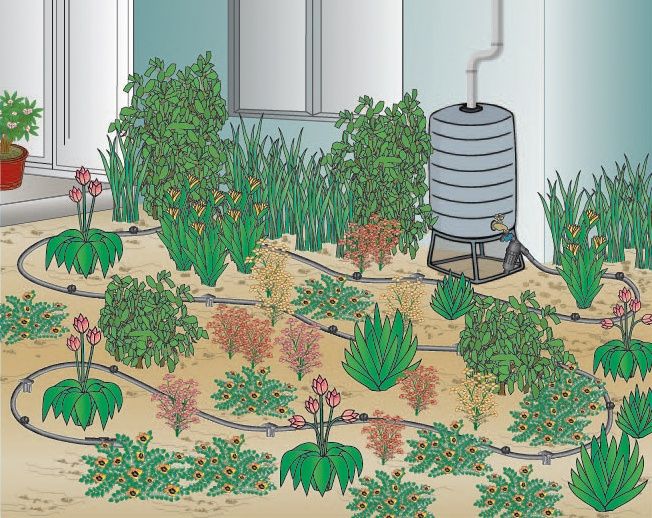
Hardscaping materials arranged thoughtfully create useful spaces for outdoor living while reducing lawn areas requiring irrigation. They provide structure and form within xeriscape designs.
Mulching
Mulching is a key practice in xeriscaping that provides numerous benefits. Organic mulches like wood chips, bark, leaves, straw, and pine needles help retain soil moisture and reduce evaporation from the soil surface (https://resourcecentral.org/mulch-the-fifth-xeriscape-principle/). Mulch also moderates soil temperature, helping to keep plant roots cooler in summer and preventing freezing in winter.
Other benefits of mulching include weed suppression, erosion control, and improving the soil as the mulch decomposes over time. Applying 2-4 inches of mulch in planting beds and around trees and shrubs is ideal (https://planttalk.colostate.edu/topics/water-wise-xeriscape/1905-xeriscape-mulches/). Maintaining mulch depth is important, so it should be replenished annually as needed.
Organic mulches made from regionally available materials are recommended for xeriscapes. Options like wood chips, pine needles, shredded bark, and even autumn leaves make excellent mulches. Mulch selection can complement the overall landscape design, using darker mulches around foundation plantings and lighter mulches in perennial and shrub beds.
Limited Turf Areas
One of the key principles of xeriscaping is limiting the amount of turf grass in your yard. Turf grass requires significant amounts of water to stay lush and green during the summer months. When designing a xeriscape landscape, it’s recommended to minimize turf to less than 20% of your total yard area according to CSU Extension.
There are several good alternatives to turf grass in a xeriscape design. Some top options include:
- Drought-tolerant groundcovers like sedum, thyme, or creeping phlox
- Hardscaping elements like paths, patios, or rock gardens
- Mulch and gravel areas
- Native wildflowers and grasses
These alternatives provide interest and beauty while conserving water. It’s best to situate any remaining turf areas in strategically used accents or functional spaces. For example, you may want a small patch of turf for pets or children to play on. Overall though, significantly limiting turf is crucial for an effective xeriscape landscape.
Efficient Irrigation
Proper irrigation is a key component of sustainable xeriscaping. There are several techniques that can reduce water usage while still providing plants with sufficient moisture.
Drip irrigation delivers water directly to plant roots through a network of valves, pipes, and emitters. Water is applied slowly and precisely where it is needed (https://www.gardeningknowhow.com/special/xeriscape/irrigation-systems-for-xeriscape-environments.htm). Drip systems prevent water loss through evaporation and runoff.
Installing rain barrels that collect water from rooftops provides a free source of irrigation. The stored water can be used to supplement irrigation needs.
Soil moisture sensors detect when plants need watering and allow irrigation systems to run only when necessary. This prevents overwatering (https://www.landscapingnetwork.com/xeriscape-landscaping/irrigation.html).
Scheduling irrigation for early mornings or evenings minimizes evaporation loss. Adjusting the schedule seasonally based on weather patterns optimizes water usage (https://planttalk.colostate.edu/topics/water-wise-xeriscape/1903-xeriscape-efficient-irrigation/).
By implementing water-efficient irrigation techniques, xeriscapes can thrive with a fraction of the water required for traditional lawns.
Maintenance
While xeriscaped landscapes require less maintenance than traditional lawns, some regular care is still required. The main maintenance tasks include occasional weeding, pruning/thinning plants, and replacing dead plants.
Weeding should be done a few times per year to remove any unwanted plants that may compete with your drought-tolerant selections. Focus on pulling weeds when they are small and have shallow roots for easiest removal. Hand pull or use a hoe to eliminate weeds.
Pruning and thinning plants helps promote healthy growth and remove dead branches or leaves. Prune spring or fall, avoiding hot summer months. Focus on removing crossed branches, dead wood, and select branches to open up the plant. Thin dense foliage to increase air circulation and light penetration.
Replace any plants that fail to thrive. Monitor plants closely the first year and be prepared to replace ones that die. This ensures your xeriscape continues to look tidy. Select replacements well-suited for the solar exposure and soil in that location.
Overall, xeriscaped yards require far less watering, mowing, fertilizer, and overall maintenance compared to traditional lawns. But occasional weeding, pruning, and replacing plants helps maintain an attractive, thriving xeriscape.
Getting Started
The first steps to creating a successful xeriscape are assessing your yard and developing a plan. Carefully observe sunlight, drainage, existing plants and trees, paths, and utilities to determine the unique needs of different zones in your landscape. Also consider how you want to use the space. Then sketch a plan marking the various hydrozones and placement of plants, paths, patios, etc. Refer to xeriscape design principles to optimize water efficiency.
It’s also essential to prepare the soil by loosening compacted areas and incorporating organic compost to improve drainage and water retention. Soil amendments like lava sand can further help sandy soils better hold moisture.
When selecting plants, choose a diverse mix of low-water native species that are suited to the sun exposure and soil in each hydrozone. Refer to local xeriscape plant lists for guidance. Limit turf grasses to small accent areas or replace with hardscape features.
Install a low-volume drip irrigation system with separate zones for each hydrozone. Use smart controllers and rain sensors to maximize efficiency. Water deeply but infrequently to encourage deep root growth.
Apply 3-4 inches of organic mulch around plants to reduce evaporation and weed growth. Leave space around plant crowns to prevent rot. Refresh mulch annually.

